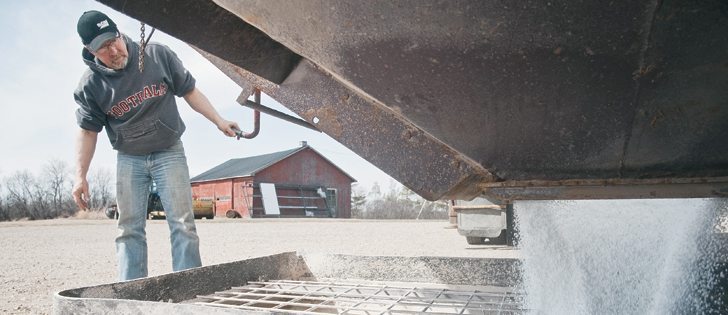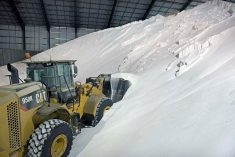Growers can thank China not only for bolstering crop prices but for keeping input costs in check, says a fertilizer analyst.
David Asbridge, president of NPK Fertilizer Advisory Service, said urea prices could have been ugly last year if it wasn’t for the Asian powerhouse.
Production curtailments in Ukraine and Egypt caused a dramatic reduction in exports from those two countries. However, China filled the void by shipping a record amount of the product.
“It has kept prices under pressure,” said Asbridge.
Read Also

Canadian Food Inspection Agency extends chronic wasting disease control program consultation deadline
Date extended for consultation period of changes to CWD program
Torgeir Kvidal, president of Yara International, provided insight about the urea market during a recent presentation about the company’s fourth quarter results.
Exports from Ukraine have been cut because of the conflict with pro-Russian separatists, while shipments out of Egypt have been hurt by a shortage of natural gas.
Exports from the two countries fell to 1.87 million tonnes for January to September 2014 from 1.87 million tonnes for the same period in 2013, a drop of 49 percent.
“Egypt and Ukraine in combination constitute between 12 to 15 percent typically of international trade, so when that is halved from 2013 into 2014, it gives a significant effect,” said Kvidal in a webcast.
China compensated for the reduced supply by stepping up its export program. The world’s biggest urea producer shipped 14 million tonnes last year.
“It is one-third of international traded urea,” said Kvidal.
Asbridge said China’s large export program has driven down urea prices. The f.o.b. barge price in New Orleans for granular urea last week was $310 per short ton, which is down from about $420 at the same time the past couple of years.
Kvidal said international urea prices are getting close to China’s cost of production.
There is also mounting pressure on China to reduce its greenhouse gas emissions. China’s urea is produced with coal, which emits 2.5 times more carbon dioxide than urea made from natural gas.
“If you, at a point in time, come to a situation where Chinese authorities or market forces in China start to work in a way that it’s not that sensible to continue to export coal-fired urea out of China, it can have a significant tightening effect on the urea market,” he said.
Anthony Will, president of CF Industries, told investors during his presentation of the company’s fourth quarter results that he expects a significant curtailment of gas-based urea production in China over the next two or three years because gas will be allocated for other uses.
He believes the “high watermarks” for Chinese urea exports will be last year and maybe this year, and then it will tail off.
Asbridge isn’t as convinced. He agreed that another $20 to $25 per tonne drop in prices could force Chinese companies that use coal to produce nitrogen to close, but it would be plants in the interior of the country rather than the export-oriented facilities on the coast.
“It will probably impact the Chinese domestic market a little bit more than it will the export market,” he said.
Asbridge doesn’t buy Kvidal’s argument that Beijing will cut production for environmental reasons.
“He’s trying to be fairly optimistic for his own business, to be honest with you,” said Asbridge.
He said the Chinese government was behind the decision to use coal instead of natural gas because it wanted to use natural gas for other purposes.
“To say that the Chinese government now is going to come in and start regulating coal-based nitrogen very stringently to me is a little far-reaching,” said Asbridge.
He expects China to be a leading urea exporter for many years to come. The country “seriously over-built” its nitrogen industry in response to a scare in 1994, when it was forced to import 4.3 million tonnes of corn, he added.
China decided it needed its own supply of nitrogen fertilizer for its corn crop rather than be the world’s largest customer for the input.
“That’s when they really made the decision to go on this building binge for nitrogen fertilizers,” said Asbridge.
That binge will keep prices depressed for years to come, although there will be seasonal blips.
He expects urea prices to be stable until spring, when they will temporarily rise as U.S. growers plant what he thinks will be 90 million acres of corn, which needs lots of nitrogen.
Asbridge’s corn acre number is higher than what many other analysts anticipate. He said that is because the soybean-corn price ratio has turned in favour of corn in recent weeks.
However, the price bump should be short-lived. He expects urea prices to soften significantly in the summer because of continued expansion of urea production in China, the Middle East and North America.
“The world situation is getting long for urea,” said Asbridge.
Contact sean.pratt@producer.com
















